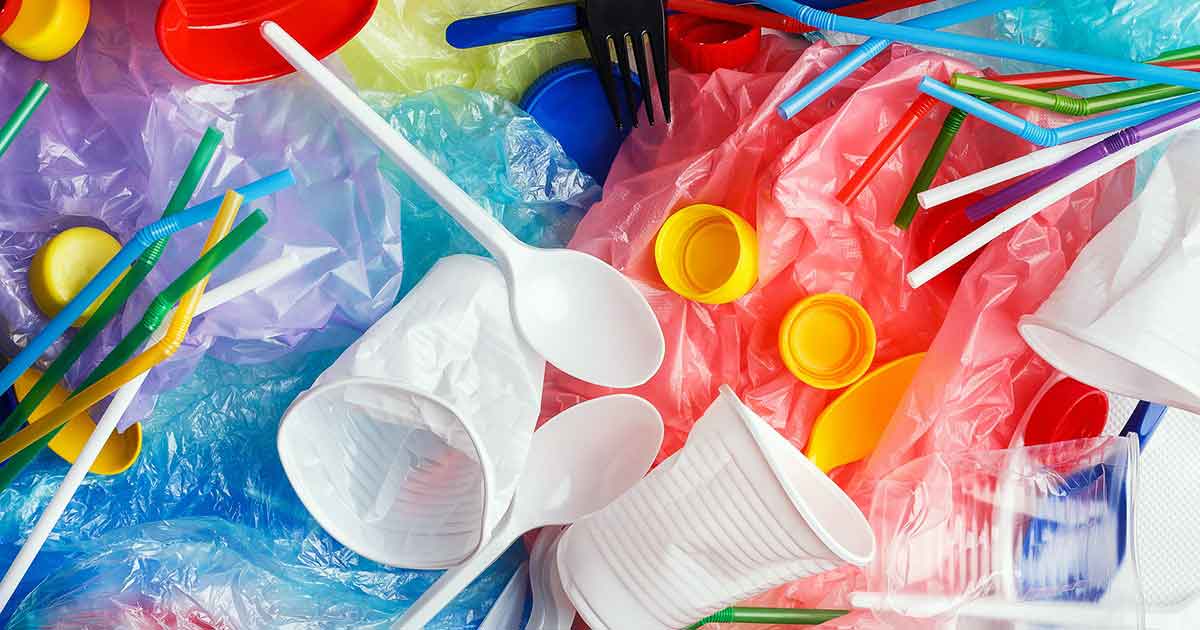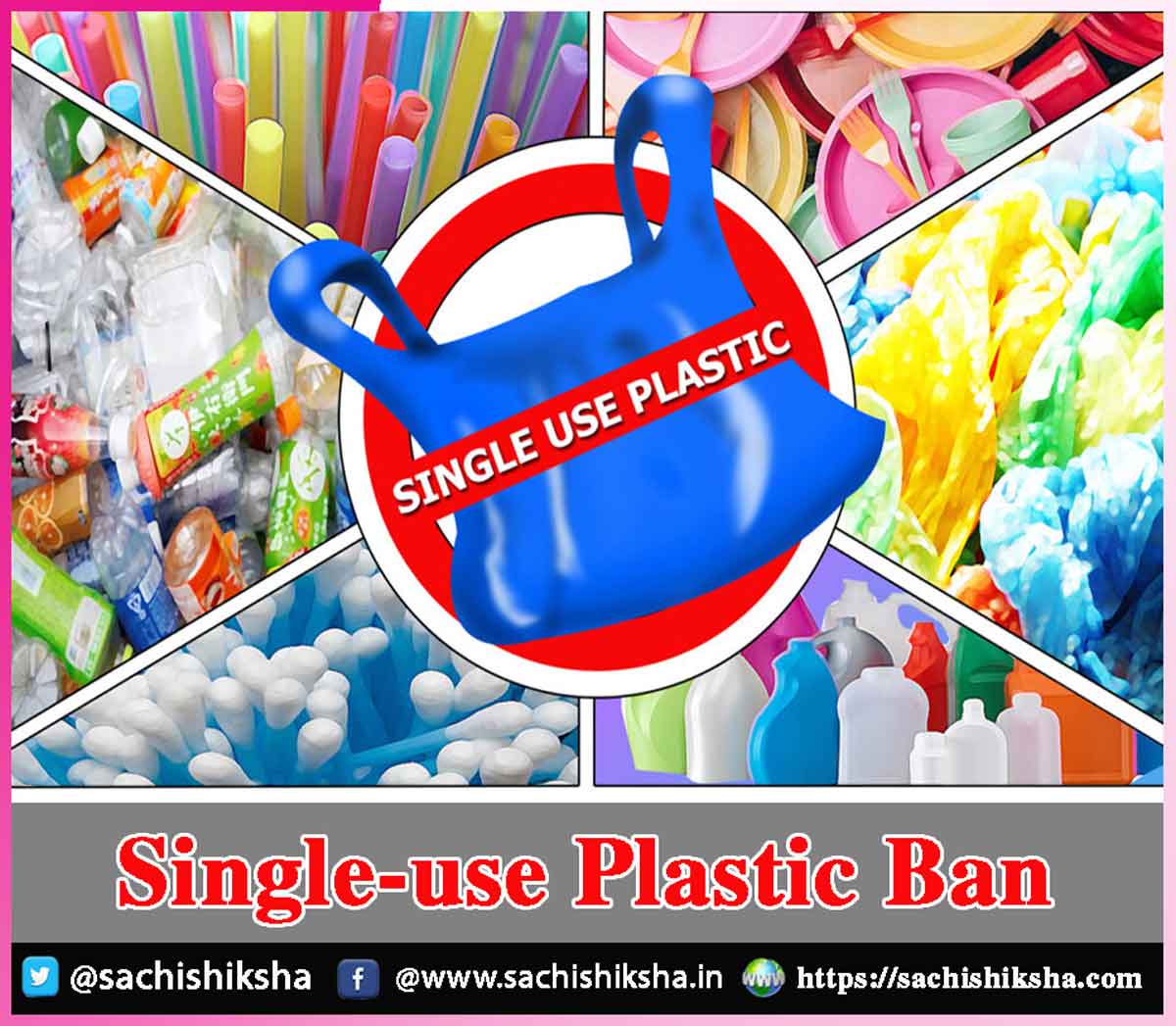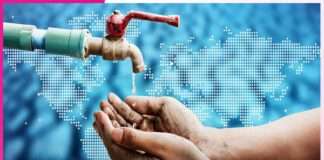Single-use Plastic Ban
Introduction: A straw that we use for our iced coffee, a plastic bag for our food delivery, and a candy bars’ wrapper: each appears harmless on its own. Such modern luxuries are so common—and so rapidly discarded—that they barely register in our consciousness. However, single-use plastics have a high cost to the environment that we will pay for generations. Our plastic’s obsession is having an adverse effect on our oceans, biodiversity, and wellbeing.
Table of Contents
Items Made of Single-use Plastics

As a Substitute of Traditional Items
Plastic, the majority of which is basically a chain of synthetic polymers, became available in the mid-19th century, but its adoption did not explode until the 1970s. Companies started substituting traditional paper or glass staples with lighter, longer-lasting, and cost-effective plastic substitutes; for example, plastic jugs substituted milk jars. A 2017 study entitled “Manufacturing, Utilization, and Destination of All Plastics Ever Created,” was released in the journal Science Advances. During the 1950s, 8.3 billion metric tons of plastic have been manufactured, with half of it coming in the last 15 years exclusively.
Practical & Significant Applications of Plastics
Plastic has many practical and significant applications, such as medical gloves and straws for individuals with impairments. However, these situations account for only a small proportion of all single-use plastic. According to the 2017 study, packaging made of plastic alone accounts for over fifty percent of non-fiber plastic, which eliminates synthetic textiles such as polyester and nylon. Much of this plastic is for single-use items.
Ban on Single-use Plastic Items
On World Environment Day, June 5, 2018, the Prime Minister said that India would completely phase out plastic that is only used once by 2022. Three years later, on August 12, 2021, the Ministry of Environment, Forest, and Climate Change (MOEFCC) issued the Plastic Waste Management Amendment Rules, 2021, which prohibited the use of certain single-use plastic items. It came into operation on July 1, 2022. Media reported that India had outlawed single-use plastics. What actually happened was that India had outlawed 19 specific single-use plastic goods, while many more were still in existence and are going to be.
India’s First Definition of Single-use Plastic
In addition, the August announcement marked India’s first definition of single-use plastic as a “plastic item intended to be used once for the same purpose before being disposed of or recycled.” This is a simplified description since it makes no distinction between needed and useless plastics, or biodegradable and plastics that aren’t. Plastics that are useless and not recyclable must be taken out as a matter of urgency. However, large quantities of hazardous non recyclable plastics, such as complex wrapping, are allowed to continue being circulated on the grounds that there are no equivalents for those polymers.
Illustration of Disposable Culture
Single-use plastics are an obvious illustration of the issues associated with disposable culture. Rather than investing in high-quality products that will last, we frequently value ease over endurance and repercussions down the road. Our dependence on these plastics implies that we are producing waste at an alarming rate.
According to the report from the United Nations Environment Programme, we manufacture 300 million tons of plastic each year, with half of it used for single-use products. That is roughly similar to the gross weight of the total human population as a whole. Eliminating the intake of plastic is the most successful strategy for avoiding this waste (and the consequences of plastic manufacture and use). Packing reusable bags and bottles is one of the best ways to reduce plastic that is only used in our daily life.
Plastic Recycling
A higher rate of plastic recycling minimizes its environmental impact. Polyethylene Terephthalate one of the most frequently recycled plastics and the substance used to produce most water and soda bottles may be converted into a variety of products, including polyester fabric and automobile components. However, the OECD (Organization for Economic Cooperation and Development) discovered that 91 percent of all plastic is not reused in any way. Rather, it ended up in the garbage dump or the environment. Single-use plastics, particularly small items such as straws, bags, and cutlery, have always been difficult to recycle because they get caught in the pores of recycling equipment and are thus frequently rejected by waste disposal facilities.
Micro Plastics
Plastics do not degrade when left aside; rather, they break up. As time passes, the sun and heat break down plastic into smaller and smaller particles, ultimately resulting into micro plastics. These small plastic particles, which are less than 5 millimeters long, are difficult to identify and can be found almost anywhere. Some micro plastics are even minuscule by layout, such as the micro beads in face cleansers and the microfibers in polyester clothes. They wind up in waterways and are eaten by organisms and ingested by humans. Micro plastics can be very damaging to wildlife; when consumed, they can readily amass inside an animal’s body and create illnesses such as pierced kidneys or fatal blocked intestines.
Ill Effects of Plastics on Humans
Several of the chemicals found in plastics are known endocrine disruptors, and studies have revealed that human consumption may result in hormone abnormalities, reproductive issues such as infertility and even cancer.
Single-use Plastic Pollution
While single-use plastic pollution is particularly visible on roadways, it affects our water considerably. Trash can be the first stage in a trash stream that reaches waterways, as plastics thrown on sidewalks get swept away by rain or move through drainage systems into rivers and streams. Only 10 rivers transport 93 percent of the world’s overall quantity of plastic that reaches the oceans through rivers annually.
Production of Plastic Trash
India, for example, produces 25,940 tons of plastic trash each day but recovers only 60% of it. (It’s also worth noting that waste management is only one aspect of the worldwide materials cycle. For example, most of the plastic manufactured in Asian countries is for goods that meet U.S. demand—and the United States frequently ships plastic garbage back to these nations for recovery.
Negative Effects on Marine Species
This flood of waste into marine environments has a significant impact on marine species. Beached whales have been discovered with bellies filled with plastic rubbish. Recent inquiries have detected plastic in the stomachs of 90% of seabirds and 100% of turtles. Sadly, the scientists predict that there will be far more plastic than fish in the water.
Effects of Single-use Plastic Ban
Plastic is placing a strain on waste management systems, the oceans, and populations at risk around the world. Banning single-use plastic minimizes pollutants while also reducing the need for plastic production, which contributes to global warming. Besides these consequences, the bans have cultural repercussions. Companies are pushed to be creative, reconsidering their designs and seeking environment friendly materials.
They also help to influence consumer perspectives, since individuals see that excessive and wasteful waste is unsustainable. Single-use plastic restrictions are spreading across the country as well as around the world, with the majority of them focusing on plastic bags, drinking straws and mixers.
Major manufacturers of single-use plastics have a significant ecological effect. As parts of the Break Free from Plastic Campaign, Greenpeace volunteers audited plastic pollution around beaches, sorting through thousands of unique pieces from 42 nations to determine its source. They noticed that the most commonly found products were Coca-Cola, PepsiCo, and Nestlé.
Garbage Reduction in Taiwan
In Taiwan, which was previously so filled with garbage that it sparked public outrage and earned the nickname “Garbage Island,” businesses today either handle their own waste or support government-run infrastructure. That method, combined with high social responsibility and musical pickups for trash, has proven to be quite successful: the island currently records recovering rates of more than 50%. These activities are in accordance with requests for reform and shifts in human behavior.















































